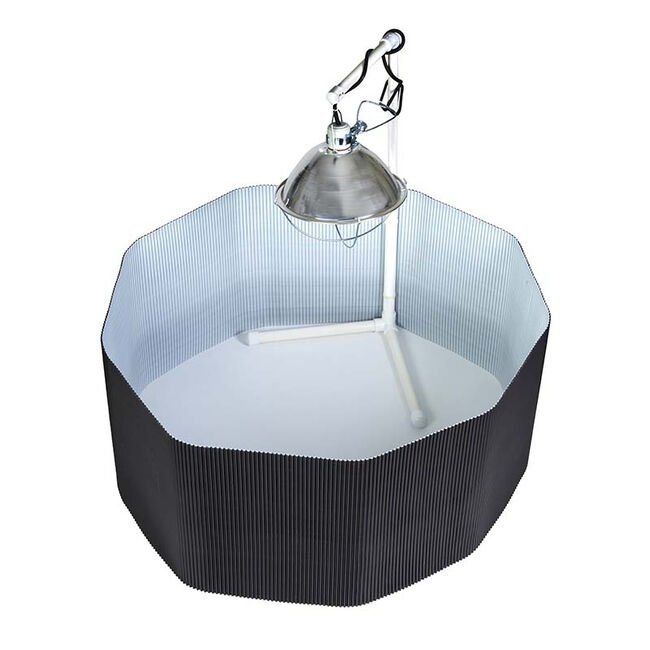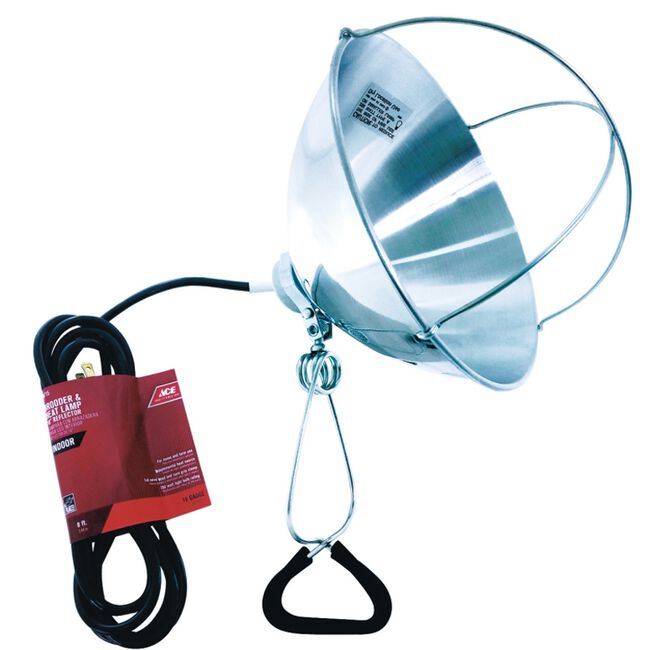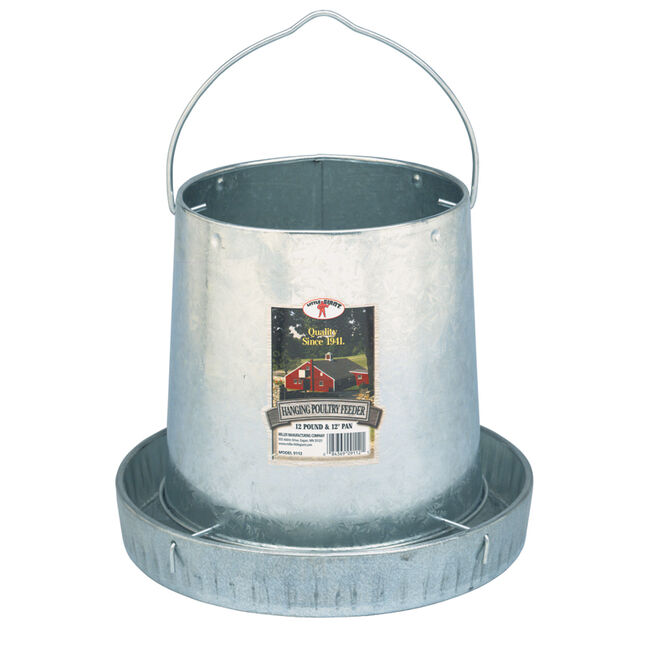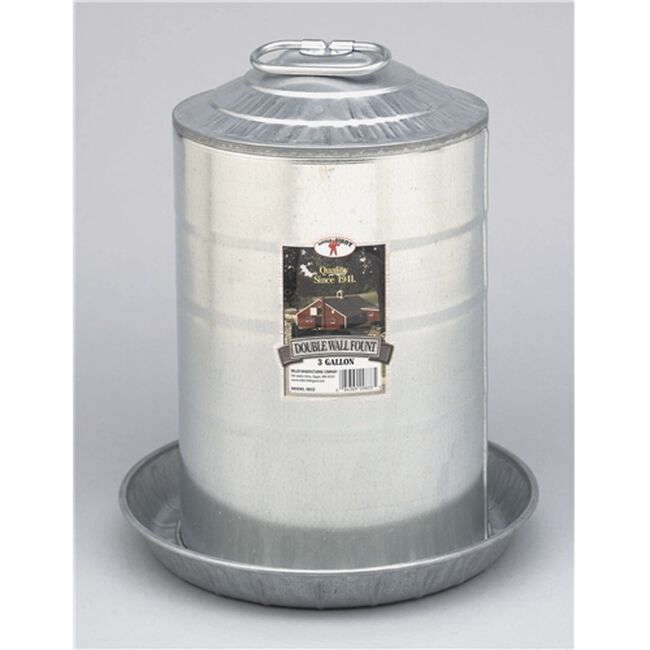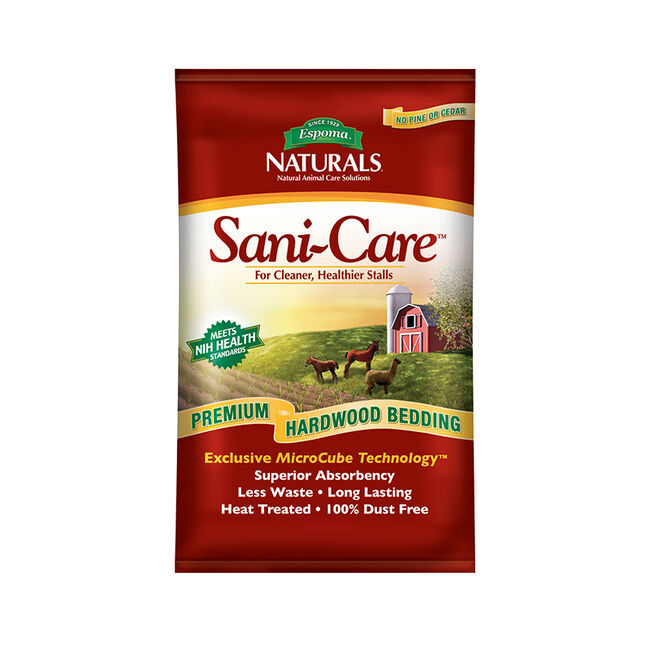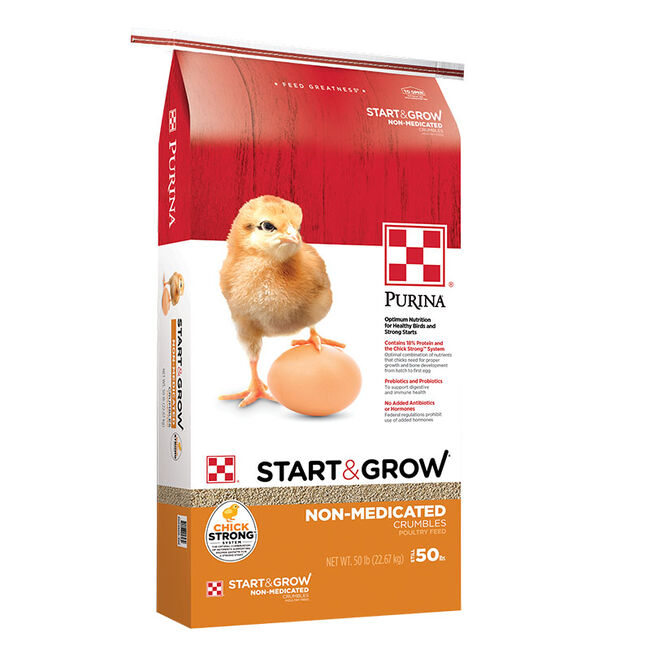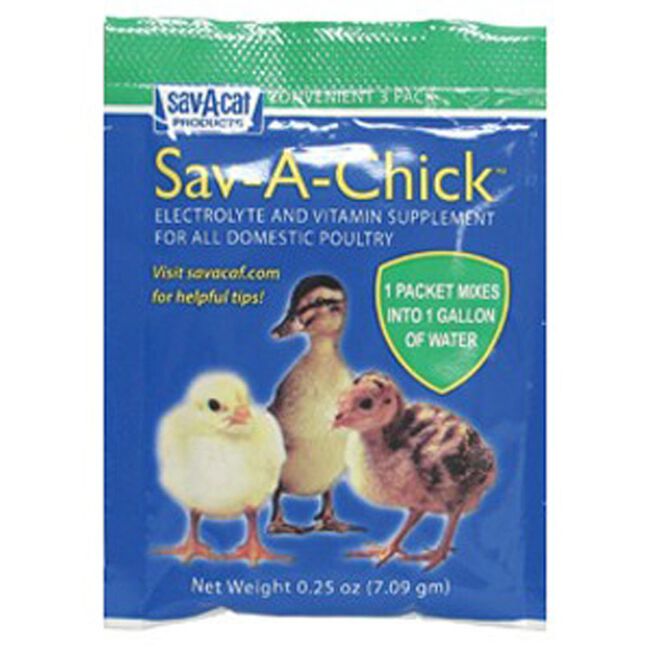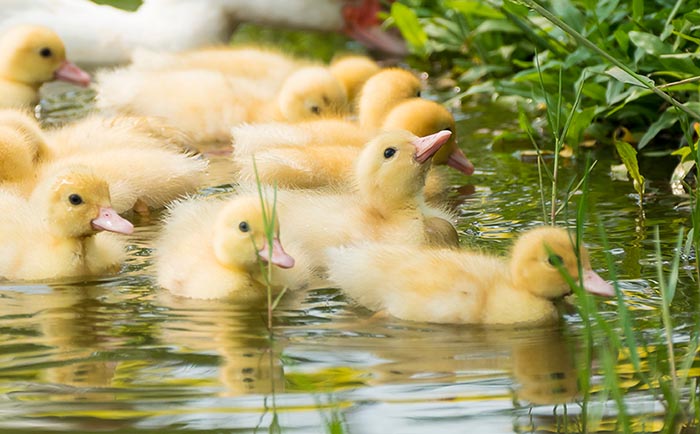
Are you planning to add ducklings to your flock this spring? With their adorable antics, sweet baby peeps (then later quacks), and playful personalities, ducks are a popular backyard bird for many poultry lovers. Additionally, they can help with pest control (ducks love to munch on insects and insect larvae) and lay a number of eggs each year (the exact amount depends on their breed, age, and living conditions). In this blog, we explore the basics of preparing to bring ducklings into your home and life whether you are an experienced poultry raiser or a first-time bird owner. While some experienced poultry owners may raise mixed flocks (ducklings, chicks, keets, etc.) from the very beginning, it is advisable to begin raising your ducks and chickens in separate brooders because of their differing nutritional needs and mess levels. Ducks also mature a bit faster than chickens, making a potential safety issue for the smaller chicks.
Duckling Supplies
Before you purchase your ducklings and welcome them to their new home, there are basic items that you need to have on hand. Depending on how familiar you are with raising chicks and keets, you may already own some of these supplies. We recommend that you have the following items in your duckling brooder kit:
A Brooder
This is a safe place for your ducklings to begin their lives. A brooder is an enclosed space with bedding, food, water, and a heat lamp. Commercial brooders, like the Miller Chick Brooder Kit, are popular options. Additionally, many people utilize a stock tank, like the 15 Gallon Poly Stock Tank, or a plastic bin with a screen cover. Whatever you choose, it should be well ventilated and offer a sturdy, enclosed setting for the ducklings to grow. A general rule of thumb is that you should have 1 square foot of space for each duckling in the brooder in the beginning; however, they grow quickly, and at the age of about 3-4 weeks, they will need approximately 3 square feet of space per duckling.
A Red Heat Lamp and Bulb
For the first few weeks of their lives, ducklings need a temporary heat source as they grow their feathers. Place a heat lamp in one corner of the brooder so that the ducklings can access the warm area and also move to the cool area easily. It is important to purchase an industrial or farm-rated heat lamp, such as the Ace Hardware 250 Watts Brooder and Heat Lamp, which are manufactured to withstand these conditions without becoming a fire hazard. Red bulbs, like the Miller 250 Watt Red Bulb for Brooder Lamp, are recommended because they provide heat without mimicking sunlight, which may disrupt your ducklings’ sleep cycles. To modify the temperature of a heat lamp, simply move it closer to or further from the brooder floor. It is important that the heat lamp is securely fastened because if the heat lamp falls on the floor it can become a severe fire hazard.
A Brooder Thermometer
It is important to monitor the temperature of the brooder carefully to allow for optimal health. Generally, it is recommended that an area of the brooder be at 90-92 degrees until they are three days old, then 85-90 degrees until they are a week old. After that, the temperature in the brooder should decrease by about 5 degrees each week. A thermometer allows you to easily make these changes and verify that you have the appropriate temperature.
A Chick Feeder
A poultry feeder allows you to feed your ducklings while keeping the foodstuffs clean and contained. Initially, you will want a chick feeder, like the Little Giant 3lb Plastic Hanging Poultry Feeder, to allow your ducklings access to the food, but as they grow you can transition to a larger feeder, such as the Little Giant 12 Pound Hanging Metal Poultry Feeder. The feeder is made to prevent ducklings from walking and scattering the feed, which they may do if you put it in a bowl or on a plate. By keeping the ducklings out of the feeder, you help to minimize the mess and the amount of food wastage.
Waterer
Ducks need to be able to dip their beak (up to their nostrils) into their water in order to drink. This means that gravity-fed waterers, such as the Little Giant 3 Gallon Double Wall Poultry Waterer, are the most appropriate. Nipple feeders are popular for other poultry birds, but they will not work for ducks, this is because they cannot “peck” the water like birds with pointier beaks. Be prepared to clean the waterer frequently, because ducklings love water and can quickly make a mess of it. In order to keep it clean, many duck owners raise the waterer up, either on a block of wood or on an upturned tray.
Bedding
Ducklings can be messy, so it is important to have absorbent bedding in the brooder. This will make cleaning easier, while also cutting down on any odors. Many duck owners have success with a variety of beddings including pine shavings, hemp bedding (like AubiChick Hemp Bedding), and chopped straw (such as Koop Clean Chicken Bedding). Sani-Care Premium Hardwood Bedding is a unique absorbent, dust-free bedding that is also popular among our customers as well and very easy to clean.
Duckling Starter
A high-quality starter feed for your ducklings sets them up for success later in life by giving them the nutrition they need to thrive. If you have a mixed flock of chicks and ducks, a non-medicated chick starter is a popular choice, however, if you are just raising ducks, you should consider selecting a duckling starter feed, such as Kalmbach 20% Flock Maker Crumbles. After feeding the starter, there are optional foods as a next step, like the Purina Duck Grower or New Country Organics Duck Grower, which are specifically formulated for ducks after they have completed time on a starter feed but are not yet adults. Some owners start their ducks with non-medicated chick starters, like the Purina Mills Start & Grow Non-Medicated Chick Feed. If you decide to utilize a chick starter, you will need to make sure that it includes niacin, which is an essential nutrient for ducks and geese, but not for chickens. You can supplement a niacin-free feed with brewer’s yeast to make sure that you meet your ducklings’ requirements. The suggested amount would be 1.5 Tbsp brewer’s yeast per 1 cup of chick feed. Ducklings should never be fed a medicated chick starter. As they mature, their protein needs will begin to taper and you can transition them to a feed for adult ducks.
Electrolyte Supplement
Keeping your ducklings hydrated is essential to their well-being. During times of stress, such as the case of moving to their new home, ducklings may need increased support to meet their hydration needs. Providing fresh water mixed with an electrolyte supplement during stress, illness, and high heat will ensure that your flock stays hydrated and healthy. Whenever you give electrolytes, like Sav-A-Chick Supplement, make sure that you provide your birds with fresh water in a separate container.
Setting Up Your Brooder
When you set up your brooder, there are a number of factors that you need to consider. The brooder should be located in a well-ventilated area that is free from drafts — ducklings can become chilled easily. The brooder should be predator-proof if it is outdoors, if the brooder is inside, make sure that it is safe from dogs and cats. It should have an adequate layer of bedding, thick enough to absorb manure and water, yet thin enough to allow the ducklings to move around easily.
The heat lamp should be placed in a corner of the brooder, giving the ducklings the chance to cool off on the other side of the brooder if it becomes too hot for them. A general rule of thumb is to start with the heat lamp 18 inches away from the floor of the brooder. Observe your ducklings to ensure that you have the temperature correctly adjusted — if they are all huddled together underneath the heat lamp, it is too cold. Conversely, if they are all scattered away from the heat lamp, the brooder is too hot. Ideally, the ducklings should be evenly dispersed under the heat lamp, with some of them exploring the unheated area. To adjust the heat lamp, move it closer to the floor of the brooder to make it warmer and further from the floor of the brooder to make it cooler.
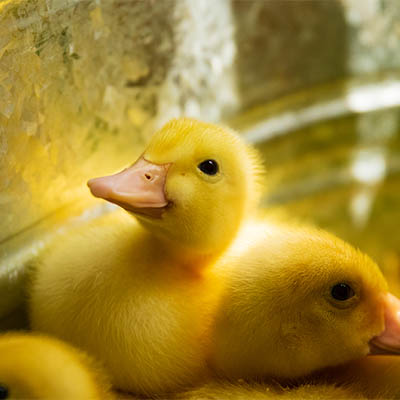
It is imperative that the heat lamp is securely fastened because a heat lamp falling into the brooder is a severe fire hazard. There are a number of different ways to hang or secure the heat lamp, so it is important to pick one that works for your individual situation. Some poultry owners are able to hang it from a rafter in the ceiling, while others choose to utilize a pulley system with hook and eye screws to hang it. Others have had success zip tying the lamp to a stationary source, such as a sturdy ladder that is situated over the brooder; or, if you are handy, you can build a frame over your brooder to hold the heat lamp in place. Check out this blog post from Little Red Farmstead for a simple instructional resource on how to build your own frame, Easy DIY Heat Lamp Stand for Your Brooder. Many times the clamps on the heat lamp slip, so it is not recommended that you rely on the clamps as the only method of holding the lamp in place — having a backup of a chain, zip tie, rope, etc. will help to keep your birds safe. However you choose to hang your heat lamp, it is important to check that it is secure on a regular basis to prevent a tragedy from occurring. Use caution whenever using a heat lamp in your brooder. You can learn more about proper heating for your ducklings in this article from The Self-Sufficient Home Acre, How to Safely Heat Your Brooder.
Ducklings are very sensitive to heat and are quite fragile in their first days of life. Make sure that you test the heat lamp prior to bringing them home plus so that they do not catch a chill, ensure that the brooder is warmed up prior to placing them in it (start the heat lamp before you pick them up). Be aware of their needs on the ride home from the store as well, keeping them as warm as possible. Your ducks should stay under a heat lamp until they are fully feathered, generally at about 6-7 weeks of age.
Place the feeder and waterer in an area that is away from the heat lamp. If possible, you want to provide your ducklings with the option to leave the heated area whenever possible. Ducks can be extremely messy, so you will also want to keep the food and water away from one another. This will help to minimize the food wastage, however, you should still expect food wastage to occur. Place the waterer on a board or overturned dish to elevate it a bit, ducklings are notorious for making messes in their water dishes.
Because ducklings can be so messy and because they have messy and wet droppings, you will need a plan to clean the brooder on a regular basis. Many duck raisers find that daily cleaning of the brooder keeps it relatively odor-free and ensures that the floor of the brooder is dry and not slippery. Frequent cleanings are imperative, in order to limit the amount of moisture and ammonia in the coop.
Once you have set up your brooder, you are ready to welcome baby ducklings into your home. Be ready for a multitude of smiles and a lot of laughs as you watch them mature into healthy ducks.
Frequently Asked Questions About Raising Ducks
Raising ducks is a bit different than raising chickens, here are some of the common questions that we receive from our customers:
Do I need a pond to have ducks?
Ducks are instinctively drawn to water and designed to swim, so it’s important to have an area for them to swim and bathe in. This does not need to be a pond or large body of water; a plastic swimming pool for children can serve the same purpose. By providing your duck with water to splash, swim, and clean themselves in, you can help your ducks thrive. If you do use a plastic pool, try to clean it out frequently and provide them with fresh water (ideally every few days), as ducks may defecate in the water and/or make the water dirty.
What time of year should I buy ducklings?
The perfect timing for purchasing ducklings will depend on the area of the country that you live in as well as your brooder setup. Generally, we recommend bringing your ducklings home in April or May. Our selection of ducklings is usually available in May.
How many ducklings should I get?
Ducks are highly social birds. We sell our ducks in a minimum order of three birds, this is to ensure that the ducklings have companionship, even if something happens to one of the birds.
Should I buy males and females, or just females?
When you order ducks from us, you will see that some breeds are available as straight run (a mix of males and females), while others are available to purchase as females only. What you purchase will depend on the size of your flock, your setup, and your desires for your flock. Generally speaking, males (drakes) are more aggressive and a bit louder, but they also tend to protect the females. If you would like to have a small flock and do not plan to hatch ducklings in the spring, it may be best to start with just female ducks. Male ducks tend to be less aggressive than roosters, however, and many larger flocks are able to have several males who get along just fine.
Why do ducks need niacin?
Niacin, vitamin B3, is required for ducks of all ages because they are not able to synthesize it from tryptophan (an essential amino acid). To combat this, ducks need food that is supplemented with niacin. It is especially important for growing ducklings because a niacin deficiency can cause leg deformities, enlarged joints, and bowed legs. If it continues, the ducklings can become so crippled that they are unable to support their own weight. Brewer’s yeast is a popular way to supplement a duck’s niacin intake.
Can I feed my ducklings too much niacin?
Generally speaking, you should aim to give your ducklings 10 mg of niacin each day. This can be achieved with a commercial duckling starter or supplementing with additional niacin. Niacin is a water-soluble vitamin, however, so feeding too much niacin is not a typical concern.
When can ducklings start swimming?
Ducks love to swim, even from an early age! Starting at one week of age, you can provide your ducklings with a shallow dish of water (½-¾ of an inch) to splash and play in for about 15 minutes a day. Ducklings can begin to swim as early as four weeks of age, but they should be carefully supervised. At this young age, ducklings do not have waterproof oils on their feathers, so you will need to thoroughly dry them and provide them with a warm, draft-free area after they go swimming.
Can ducks live with chickens?
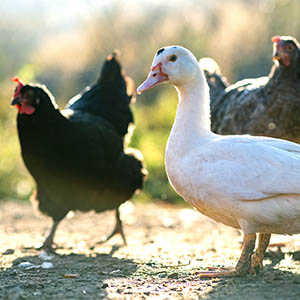
Yes, many poultry enthusiasts raised a mixed flock, and chickens and ducks can easily live together in harmony within the same coop. However, it is important to realize ducks and chickens have different needs and both must be met in order to have happy and healthy birds. For example, chickens roost at night while ducks need a nesting location on the floor (preferably not underneath the roost!). Ducks are also much more cold-hardy than chickens, due to their waterproof feathering and larger fat stores. Additionally, many chickens do well in confinement, but traditionally, ducks thrive when they are given a free-ranging setting that allows them to forage. Ducks’ fecal matter is much looser and wetter than chickens, making it more difficult to clean in certain environments.
Can ducks carry salmonella?
Just like their chicken cousins, ducks can be carriers of salmonella. To keep you and your family safe and healthy, make sure that you wash your hands after handling them and after cleaning their brooder.
Adding ducklings to your home requires the proper equipment and planning as well as a bit of knowledge. However, the payoffs are tremendous, with their adorable antics, pest control, and egg production. Consider adding ducklings to your family this spring.
You can learn more about the various types of ducks available for purchase at The Cheshire Horse by reading our blog post, Waterfowl Breeds.
At The Cheshire Horse, we carry poultry supplies for flocks of every size. Whether you have a few ducklings in your backyard or a large-scale homesteader, you will find everything that you need in our extensive in-store and online inventory.

